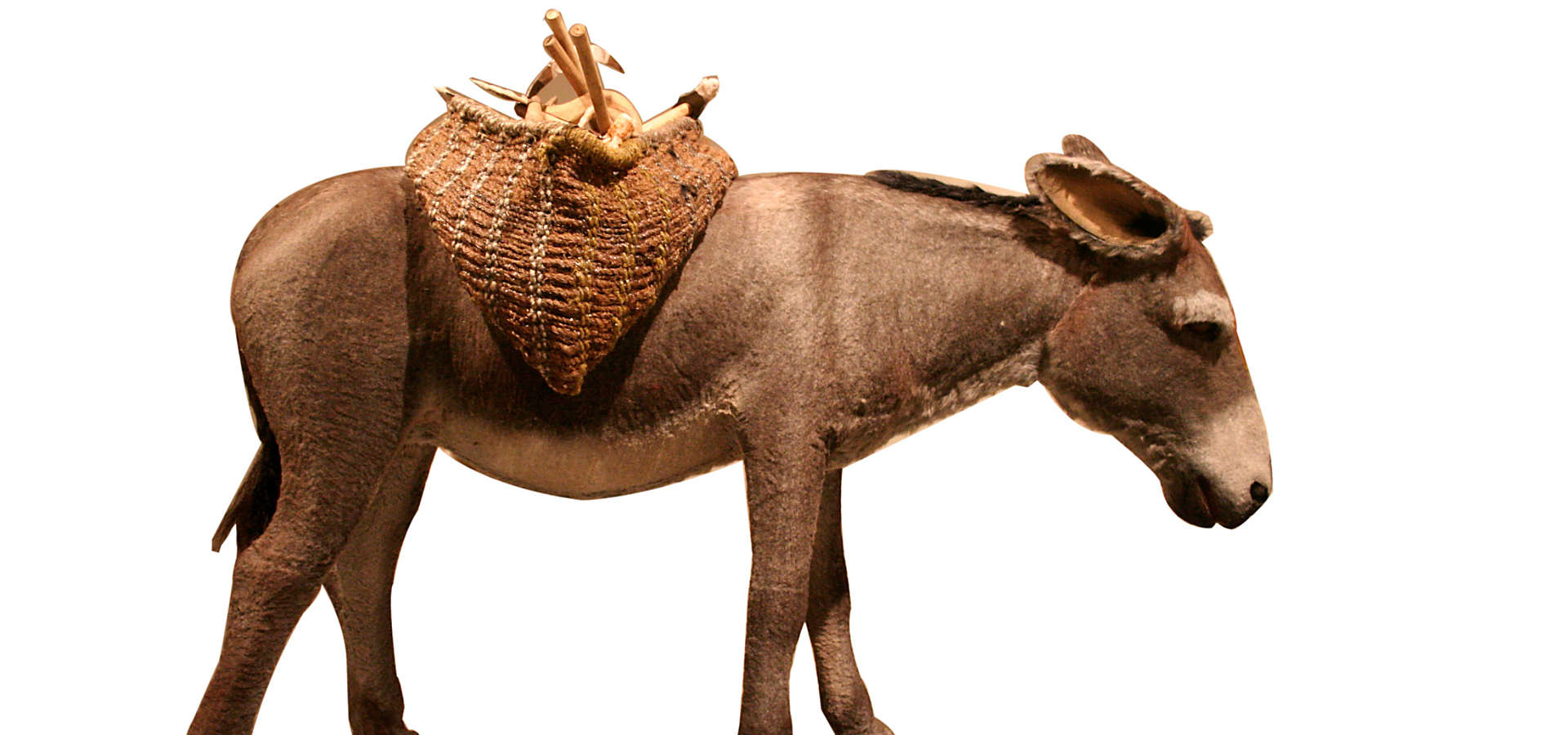Silence and Aggression
Displacement is never voluntary. It happens at the confluence of forces that are too big to be completely seen, too widespread to be ever described. They don’t seize from individuals their everyday rights directly but dislocate, instead, their personhoods to unfamiliar terrain, paralysing their ability to react. In this way, displacement feeds on existing beliefs and bodies, cannibalising them for the expansion of the conqueror.
Iranna explores such dislocation, and the tensions it creates for both the banished and the banishers, in his new works from 2008, exhibited together as “The Birth of Blindness”. In his own words, his work “is trying to say something about the foolishness of everyone involved — whether they being [sic] victims or aggressors — because they have not thought about what their actions will mean”. This exhibition then frames the sum of the parts.
If there is one definitive star from this series, it is his award-winning sculpture, “Wounded Tools”. Nowhere does this complex silence and aggression coalesce better that in this work. The piece is a scrawny donkey, the kind seen at construction sites and brick kilns all over north India. It is a mute beast of burden, laden with the dramatis personæ — crude wood and iron workman’s tools. These are multiple editions of a gardener’s khurpi, a carpenter’s hammer, all bandaged, their blood and medication both seeping out to discolour the pristine white of the gauze. There is a low-key tragedy playing out here. Workers, people with nothing more than their labour — have sent off their tools to be disposed. The workers, like their tools, are now redundant. Here is a mass burial, without any noticeable protest. Is this an act of sharp protest? Or is this the shape of the living dead?
WHAT IS IRANNA ALLUDING TO?
There are hints in his other sculptural works. Two of these are about hooded, naked men, subservient in their huddled, crouching. Their deathly white, glistening bodies are identical, all differences intentionally erased to emphasise their dysfunctional communality. Markers of identity have been stripped off. The human face, the last remaining clear indicator of individuality, is covered in a black hood. There is a surprising I-Give-Up kind of stillness, as if the Dementors from Harry Potter have been here, sucking out the soul.
Living in India, in these times of institutionalised violence, Iranna’s works indicate mass lobotomy, a consequence of such violence, underscored by its repetitive nature. Although each work contains a single story, it also offers vignettes of societal disintegration, an almost inevitable outcome of shifting constructs of power in India. To establish yourself as the dominant one, headcounts and bodies are as vital as capital assets. The victors collect and parade these, benumbing both audience and “victims” by their sheer audacity and depth.
Iranna has several older narratives to fall back on — development projects, lopsided environmental conservation and political genocide. But he has plenty of new ones too: the privatisation of city-systems, the shrinking of public space and large-scale migration. Such involuntary dislocations are the substance of Iranna’s work. He evocatively feels his way around these new fuzzy-gulags, but finds himself in a similarly suspended space as those he depicts. The space in New York — the white-walled AICON gallery, where I saw the show, heightens this disjuncture, as its smooth whiteness contrasts with the works, the concerns, and the process of seeing and showing. He is unable to reach closure, perhaps because it’s too ghastly to imagine. This uncertainty is the strength of Iranna’s art production and what allows for him to address a complex idea with confidence.
